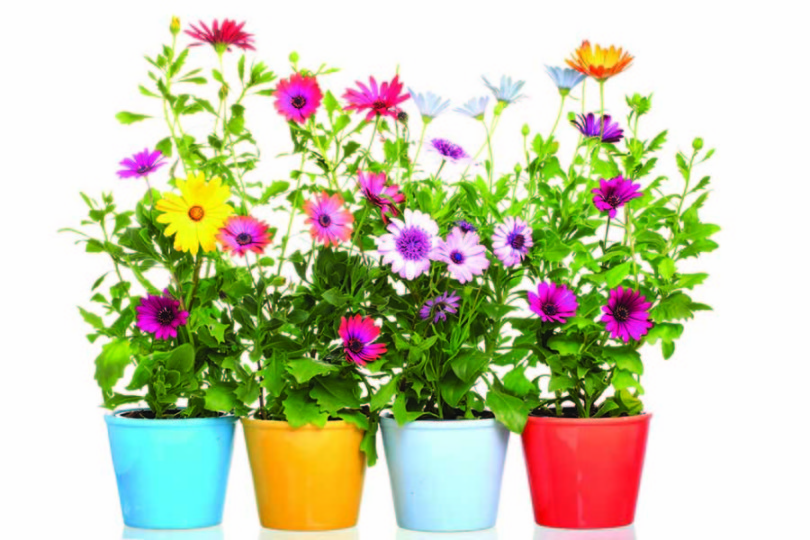By Kristen Hannum –
What’s a gardener to do during these short days of winter? This really isn’t much of a hardship as gardeners are typically imaginative people who love to plan and learn. Isn’t that the reason for the proliferation of books, catalogs and websites focused on gardening? All are wonderful companions for a frigid, snowy evening.
To test your knowledge, here’s a brief quiz for Colorado gardeners. Good luck!
1. When green-thumbed gardeners from Oregon or Pennsylvania move to Colorado, they’re often shocked that the plants they stick in the ground here don’t take off they way they did back home. That’s because:
a. Colorado’s average elevation is 6,800 feet above sea level. That means intense sunlight mixed with low humidity.
b. A lot of Colorado’s dirt is made up of alkaline clay soils. It needs patient and persistent amending.
c. Colorado’s winds and changeable weather are hard on plants, which must be protected and carefully chosen for their hardiness.
d. All of the above.
2. It’s best to plant the same kind of vegetables in the same place every year.
a. Yes. The nematodes in the soil become accustomed to various specific plants growing there, meaning you have to start the soil-building process over again every time you switch.
b. Yes. You know where the sun is best for tomatoes, sweet peas and other plants, and so it’s ideal to plant them in that best spot every year.
c. No. Who wants to grow the same thing every year?
d. No. Different plants deplete the soil of different nutrients, and so it’s best to rotate.
3. Who uses the most pesticides per acre of land?
a. Farmers, who must use more pesticides than they’d like because their crops feed the world, and pests become resistant.
b. Homeowners, who use pesticide on their lawns and gardens.
c. Pot farmers, who use chemicals meant for lawns.
d. Apartment dwellers, who want to use up the bottles of pesticide they buy and have only a couple of planters to put the stuff on.
4. It’s a good idea to save seeds because:
a. You are playing a part in preserving genetic variety and biodiversity.
b. You are preserving varietal characteristics you want.
c. You are creating varieties specifically adapted to your particular microclimate and soils. The seeds from the best plants of each generation will give you increasingly better plants.
d. All of the above.
5. The best Xeriscape means:
a. A mix of plants that take little or no irrigation beyond the natural rainfall.
b. Rocks. Lots of rocks.
c. Letting nature reclaim your yard so there is zero landscaping. That’s what the word means.
d. Wooden decks and some geraniums in terracotta planters.
6. Invasive species to avoid planting in Colorado include:
a. Oregon grape.
b. Rabbitbrush.
c. Oxeye daisies.
d. All of the above.
7. Colorado gardeners can grow luscious, huge rhododendrons if they:
a. Move, preferably to a coastal area with acidic soil.
b. Only use well water on them.
c. Grow them in the full sun.
d. Grow them in containers with acidic soil.
Answers:
1. d. The Colorado State University Extension has a wealth of information for Colorado gardeners, both new and native, with suggestions to outwit Colorado conditions.
2. d. Rotating your crops will also reduce pest problems and diseases harbored in the soil while maintaining soil structure. Even if you have only one place in your garden that’s sunny enough for tomatoes, it’s best not to plant them there every year.
3. b. According to the U.S. Fish and Wildlife Service, homeowners use up to 10 times more chemical pesticide per acre keeping up their lawns. That’s to the great detriment of pollinators, frogs and other beneficial species. However, if you answered c., give yourself a pat on the back. The studies aren’t in yet, but medical marijuana samples in California showed up to 1,600 times the legal amount of pesticide residue.
4. d. But remember that hybrids will not reproduce true to type.
5. a. Xeriscape is derived from the Greek word xeros, meaning dry. It means landscaping in a way that reduces the need to irrigate beyond the natural rainfall.
6. c. Oxeye daisies readily naturalize in Colorado, crowding out native species. The Colorado State University Extension names them, along with yellow and Dalmatian toadflax, as the three most problematic, invasive herbaceous plants in the state.
7. a. Sorry, Colorado’s alkaline soil and water kills “rhodies,” as does the harsh sunshine and cold. You may find success with dwarf rhododendrons in big containers with acidic soil in dappled shade. Keep them carefully watered, not too much and not too little.
HOW TO SCORE Give yourself 20 points for every right answer.
• 120 to 140: You know your stuff! Time to start advising the neighbors.
• 60 to 100: Spend a little more time at the Colorado State University Extension website, at a class or with those gardening books. You’ll get there.
• 40 or below: Apartment living actually has a lot going for it. No lawns to mow, no pesky house maintenance and lots of neighbors close by. On the other hand, every gardener begins as a beginning gardener.

